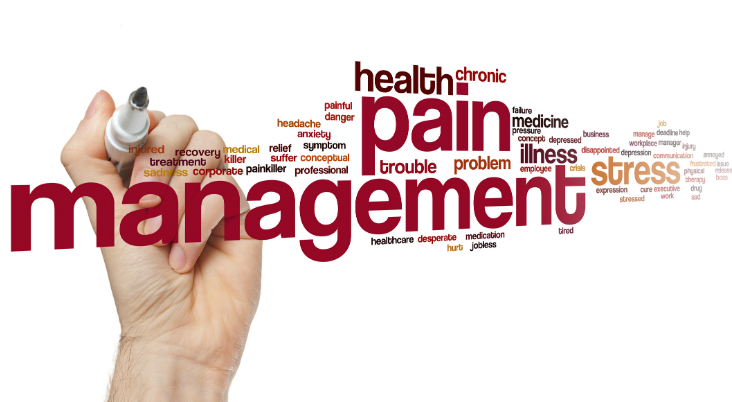
Pain Management with PEMF Therapy
Pain management is one of the most common applications for PEMFs. Whether the pain is acute or chronic, inflammatory or vascular, musculoskeletal or in the nervous system, PEMFs act in fundamental ways to help with both pain perception (pain-blocking) and the cause of the pain itself (pain reduction).
Current medical approaches to pain therapy include pharmacological, surgical and physical options. Although many patients can be provided with pain relief in this way, not all of them respond to or are suitable for these options, and on the other hand, pharmacological and surgical therapy approaches do have risk potentials not to be ignored.
The most commonly used painkillers are so-called non-opioid analgesics such as ibuprofen, paracetamol, diclofenac or acetylsalicylic acid. Not only do they have an analgesic effect, they also have an anti-inflammatory and antipyretic one. However, their side effect list, especially in higher doses, is long. For severe pain, drugs of the opiate level are necessary, which also have a high addiction and abuse potential and are among the psychoactive substances.
PEMF therapy helps with pain relief in 3 powerful ways:
1) PEMF therapy increases endorphins, serotonin, and other hormones help to relieve pain
How does this work? Let’s begin with endorphins, the “Feel-Good” or “Happiness” hormones. Endorphins are your body’s natural opiates. Your body makes opiates; you don’t have to take any pain killers. There are ways to naturally stimulate endorphins in your body.
PEMF therapy is one of those ways, and there’s research to prove that.
When your endorphin levels are high you naturally feel happier, more relaxed, less stressed, and you certainly feel less pain. Why do you think that most of the powerful pain killers are opiate-based? It’s because endorphins have been shown to be the most effective form of pain relief. But your body can create them naturally. In addition to PEMF therapy, other methods that increase endorphins include massage, yoga, meditation, deep breathing, certain foods, good hydration, and even just smiling. Add PEMF therapy to those methods and you’ll really notice some serious pain relief.
2) PEMF therapy reduces and temporarily interrupts the pain signal. Less signal equals less pain.
The second way that PEMF therapy helps is that it interrupts the signal that causes the pain. PEMF generates micro-currents that run through the neural pathways which reduce the signal needed to create the feeling or sensation of pain. Less signal equals less pain perception. PEMF not only helps to improve your “happiness hormones” but it directly decreases the triggering of the pain response. In doing so, it raises your threshold for pain so you don’t feel pain as intensely.
3) PEMF therapy actually heals the problem
Using the analogy of the oil light coming on in your car, PEMF therapy is like putting the oil back into your car so the light goes off. While the traditional medicine approach is like cutting the wire to the oil light so you don’t know that there’s a problem. PEMF actually heals and regenerates the tissue so the pain really goes away.
Pain mechanisms can be extremely complex, but on the most basic level involve a signal being transferred to a receptor and causing a change in cellular behavior.
THE GOAL is to prevent cellular injury in the first place, which is WHY daily treatment of PEMF therapy is essential. But with acute injuries that have ALREADY happened, the goal is of course, injury resolution and pain management.
The body normally does its own pain-blocking in response to pain signals through an increase in levels of serotonin, endorphin and encephalins along with a decrease in cortisol and noradrenaline.
The primary mechanisms for pain in response to cell injury are edema, apoptosis or necrosis, diminished circulation, decreased cellular metabolism and impaired cellular repair processes. PEMFS reverse ALL these :
– Improve circulation/microcirculation.
– Enhance cellular metabolism and energy.
– Improve detoxification and reverse swelling/edema.
– Stimulate stem cells and cellular regeneration to ACTUALLY heal the problem so the pain GOES away and stays away.
If you’d want to take a closer look at the development, processing, and treatment of pain, and what role PEMFs can play in it, go to the article WHAT IS PAIN?
To find out how PEMF can reduce Back Pain, Neck Pain, Headache or Migraine, visit : https://pemf.com.my/pemf-for-back-pain-neck-pain-headache-migraine/
PEMFs have been used extensively in many conditions and medical disciplines. They have been most effective in treating rheumatic and musculoskeletal disorders. Although PEMFs have been proven to be a powerful tool, they should always be considered in combination with other therapeutic procedures.
Mechanisms and pain-related conditions PEMFs have shown preclinical or clinical effectiveness :
• Chronic lower back pain 1,2, including herniated lumbar discs, spondylosis, radiculopathy 3, sciatica, arthritis, osteochondrosis 4
• Headache 5, migraine 6, neck 7, shoulder and arm pain 8
• Chronic musculoskeletal pain 9,10,11
• Neurologic pain signal processing 12
• Decrease of density of brain opiate receptors and pain perception 13,14 and increasing pain threshold 15
• Toothache 16 and stomatology 17
• Bone fractures 18
• Edema and swelling 19
• Osteoarthritis 20,21
• Post-herpetic neuralgia 22
• Neuropathic pain 23
• Coxarthrosis 24
• Diabetic Neuropathy 25
PEMFs of various kinds, strengths, and frequencies included have been found to have good results in a wide array of painful conditions. There is little risk when compared to the potential invasiveness of other therapies and the risk of toxicity, addiction, and complications from medications. This creates a legit baseline for PEMFs to be a potential addition or alternative in the treatment of pain.
Research online for yourself about PEMF therapy, and learn more about all of the studies that have been conducted on improving overall health by PEMF therapy.
Contact us anytime, we are just a Phone Call away to assist you! Or simply just WhatsApp us now.
1 Preszler, RR. A non-invasive complementary method of reducing chronic muscular low back pain using permanent magnetic therapy. A Thesis For the degree of Masters in Physician Assistant Studies University of Nebraska School of Medicine, Physician Assistant Program, Lincoln, Nebraska, 2000.
2 Rauscher E, Van Bise W. L. Pulsed magnetic field treatment of chronic back pain. Bioelectromagnetics Society, 23rd Annual Meeting, St. Paul, MN, June 2001.
3 Thuile C, Walzl M. Evaluation of electromagnetic fields in the treatment of pain in patients with lumbar radiculopathy or the whiplash syndrome. NeuroRehabilitation 2002; 17: 63-67.
4 Mitbreit IM, Savchenko AG, et al. Low-frequency magnetic field in the complex treatment of patients with lumbar osteochondrosis. Ortop Travmatol Protez (10):24-27, 1986.
5 Prusinski A, Wielka J, Durko A. Pulsating electromagnetic field in the therapy of headache. J Bioelectr 7(1):127-128 Second Symposium on Magnetotherapy, Szekesfehervar, Hungary, May, 1987.
6 Sherman, R. A.; Acosta, N. M.; Robson, L. Treatment of migraine with pulsing electromagnetic fields: a double-blind, placebo-controlled study. Headache 39(8):567-575, 1999.
7 Foley-Nolan, D.; Barry, C.; Coughlan, R. J.; O›Connor, P.; Roden, D. Pulsed high frequency (27 mhz) electromagnetic therapy for persistent neck pain. A double-blind, placebo-controlled study of 20 patients. Orthopedics 13(4):445-451, 1990.
8 Kjellman GV, Skargren EI, Oberg BE. A critical analysis of randomized clinical trials on neck pain and treatment efficacy. A review of the literature. Scand J Rehabil Med 31(3):139-152, 1999.
9 Stewart DJ, Stewart JE. Acta Med Hung 1989;46(4):323-37. The destabilization of an abnormal physiological balanced situation, chronic musculoskeletal pain, utilizing magnetic biological device.
10 Kobinger W, Fischer G, et al. Using Magnetic Fields to Increase Flexibility and Reduce Pain with Respect to Ailments of the Ambulatory Apparatus. 26th Conference of the Austrian Society for Internal Medicine. July 1995.
11 Pujol J, Pascual-Leone A, et al. The effect of repetitive magnetic stimulation on localized musculoskeletal pain. Neuroreport 9(8):1745-1748, 1998.
12 Thomas AW, Prato FS. Magnetic field based pain therapeutics and diagnostics. Bioelectromagnetics Society, 24th Annual Meeting, Quebec City, PQ, Canada, June, 2002
13 Ghione S, Luschi P, et al. Electromagnetic fields and nociception: physiological and clinical responses. Forum on Future European Research on Mobile Communications and Health, Bordeaux, France, April 1999.
14 Sartucci F, Bonfiglio L, et al. Changes in pain perception and pain-related somatosensory evoked potentials in humans produced by exposure to oscillating magnetic fields. Brain Res 769(2):362-366, 1997.
15 Fleming, JL, Persinger, MA, et al. Magnetic pulses elevate nociceptive thresholds: comparisons with opiate receptor compounds in normal and seizure-induced brain-damaged rats. Electro Magnetobiol 13(1):67-75, 1994.
16 Hutchinson D, Witt S, Fairpo CG. Pulsed electromagnetic energy therapy in third molar surgery. Oral Surg Oral Med Oral Pathol, 46(6):748-754, 1978.
17 Tesic D, Djuric M, et al. PEMF aided pain reduction in stomatology. Bioelectromagnetics Society, 21st Annual Meeting, Long Beach, CA, Abstract, June, 1999.
18 Schroter M. Conservative Treatment of 240 Patients with Magnetic Field Therapy. Medizinisch- Orthopadische Technik. March/April 1976 (2):78.
19 Markov MS, Pilla A. A. Electromagnetic field stimulation of soft tissue: pulsed radiofrequency treatment of post-operative pain and edema. Wounds 7(4):143-151, 1995.
20 Jacobson JL, Gorman R, Yamanashi WS, et al. Low-amplitude, extremely low-frequency magnetic fields for the treatment of osteoarthritic knees: a double-blind clinical study. Altern Ther Health Med 7(5):54-60, 62-64, 66-69,
2001.
21 Pawluk W, Turk Z, et al. Treatment of osteoarthritis with a new broadband PEMF signal. Bioelectromagnetics Society, 24th Annual Meeting, Quebec City, QC, Canada, June,2002.
22 Kusaka C, Seto A, et al. Pulse magnetic treatment and whole-body, alternating current magnetic treatment for post-herpetic neuralgia. J Jpn Biomagnetism Bioelectromagnetics Soc 8(2):29-38, 1995.
23 Munglani R. The longer-term effect of pulsed radiofrequency for neuropathic pain. Pain 80(1-2):437-439, 1999.
24 Rehacek J, Straub J, Benova H. The effect of magnetic fields on coxarthroses. Fysiatr Revmatol Vestn 60(2):66-68, 1982.
25 Cieslar G, Sieron A, Radelli J. The estimation of therapeutic effect of variable magnetic fields in patients with diabetic neuropathy including vibratory sensibility. Balneol Pol, 1995, 37(1): 23-27.
